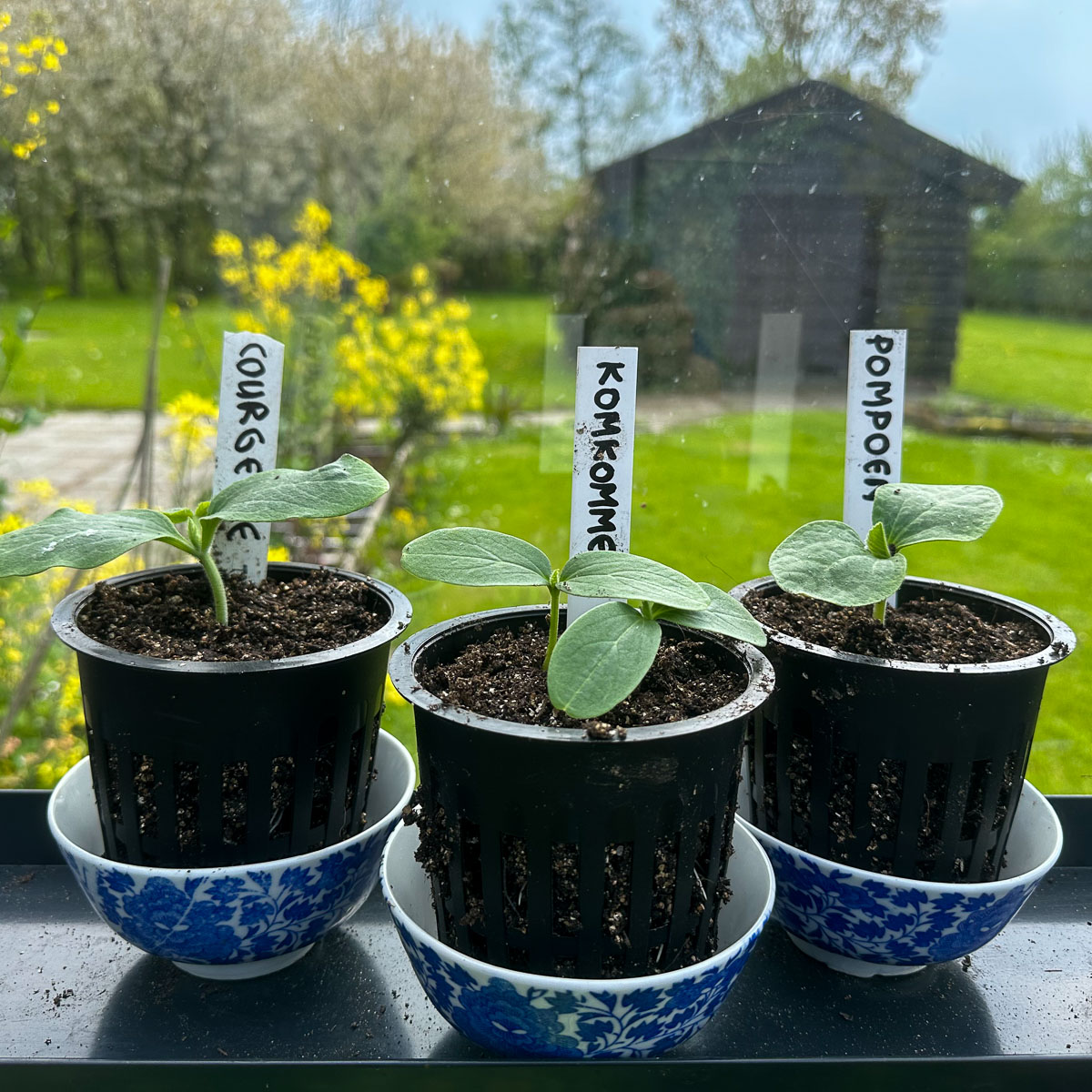- Sowing in a patch in your garden box
- Thinning your seedlings: what, why, and how
- Pre-sprouting snow peas, winter peas, and sugar snaps
- How to pre-sow with vermiculite
- Pre-sowing zucchinis, cucumbers and pumpkins
- Ice saints and hardening off your seedlings
- How long do your seeds stay good?
- Are your old seeds still good?
- Harvesting seeds yourself
- Are zucchini and pumpkin seeds unsafe?
- How do you take care of pre-sown plants?
- Sowing in a patch in your garden box
- Thinning your seedlings: what, why, and how
- Pre-sprouting snow peas, winter peas, and sugar snaps
- How to pre-sow with vermiculite
- Pre-sowing zucchinis, cucumbers and pumpkins
- Ice saints and hardening off your seedlings
- How long do your seeds stay good?
- Are your old seeds still good?
- Harvesting seeds yourself
- Are zucchini and pumpkin seeds unsafe?
- How do you take care of pre-sown plants?
How do you keep your pre-sown plants healthy?

Windowsill pre-sowing
Other than time, they need 4 things to grow well indoors:
- lots of light - sunlight direct overhead is best
- the right temperature - around 15°C
- enough nutrients - but not too much
- consistent watering
How do you make sure they get all these things?
Why do you raise summer vegetables indoors?
This also prevents birds from stealing seeds and slugs from eating the delicate seedlings.
1. Seedlings want as much light as possible

This is how Laura does it:

A south-facing window is perfect for sunlight. But beware: temperature is also important. It can be tricky to get the balance right.
2. Not too warm - around 15°C
So put your young pre-sown plants somewhere with direct sunlight, but not too warm. Experienced vegetable gardeners put their seedlings in a light, unheated bedroom or in a cold greenhouse after they've germinated.
Mochi puts them under a skylight in the spare room:


Take your plants out of the window during the hottest part of the day. Or put something in between like a sheet of white paper or some netting for example.
Tinus uses gauzy curtains:


Do you have a greenhouse or unheated conservatory?
If it's going to freeze at night, bring the plants inside in the evening, just to be safe. 🙂

3. Enough nutrients, but not too much



Since the pot is not very big, cucumber, zucchini, and pumpkin plants need to be moved to their final home outside within a month.
So, let's say you started too early and it's not time to transplant them outside. After 4 weeks or so, transfer your plants to a larger pot with just MM-Mix.
To skip all that, I start as late as possible: the end of April works best 😉
4. Water regularly
If they are in an MM air pot, it's best to water them from below. So, in the saucer or tray that the pots are placed in.
Getting them used to the outdoors
But before you can leave them outside day and night, you have to get them used to the fresh air first.

They need some time to get used to that too. But after a week, they'll start to grow again.
The rest is a piece of cake
But once they're outside, nature takes over and you don't have to do too much. Just some extra attention once in a while. But more on that next time.
Happy pre-sowing!

PS: Tips van ervaren MM-ers
Hot tip. Start pre-sowing as late as possible, so you spend less time on these steps. Pre-sow tomatoes in the two weeks before April 15, and the other summer vegetables in early May. The Planty Gardening app is here to help 😉
(Pre-)sowing
- Sowing in a patch in your garden box
- Thinning your seedlings: what, why, and how
- Pre-sprouting snow peas, winter peas, and sugar snaps
- How to pre-sow with vermiculite
- Pre-sowing zucchinis, cucumbers and pumpkins
- Ice saints and hardening off your seedlings
- How long do your seeds stay good?
- Are your old seeds still good?
- Harvesting seeds yourself
- Are zucchini and pumpkin seeds unsafe?
- How do you take care of pre-sown plants?
Get tips & tricks in your inbox
When you sign up, I’ll send you the top 3 things beginners get wrong. And how you can get it right.
We care about the protection of your data. Read our Privacy Policy